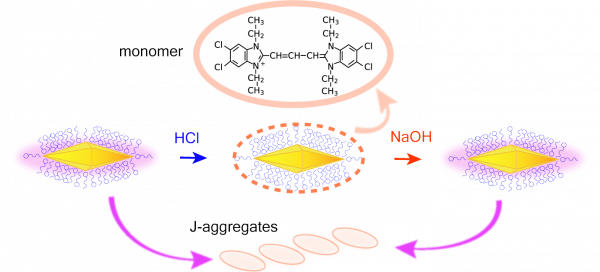PhD Thesis Defense | Alba MAría Jumbo Nogales
CFM Seminars
- Speaker
-
Alba María Jumbo Nogales
CFM - When
-
2024/05/10
10:00 - Place
- CFM Auditorium
- Add to calendar
-
iCal

A Rigorous Exploration of the Plexcitonic Phenomena: Hybridized Light-Matter States using Gold Nanoparticles and J-aggregates
Candidate: Alba María Jumbo Nogales
Supervisors: Yury Rakovich and Marek Grzelczak
Summary
This work is focused on investigating the interplay between plasmon-exciton interactions within strongly coupled plexcitonic systems. Here, gold nanoparticles were used as the plasmonic component, and molecular chains known as J-aggregates formed the excitonic component. To begin with, different spectroscopic techniques were used to characterize the photophysical properties of the excitonic systems including estimation of the exciton delocalization length in J-aggregates. This analysis was applied to various organic dyes that show the formation of J-aggregates upon increase of ionic strength and pH respectively. Later, we used carefully chosen interparticle interactions to establish the formation of two different plexcitonic systems using both dyes. This demonstrates our control over the design principles to reliably establish strongly coupled systems using different plasmonic and excitonic components. Subsequently, thorough characterizations were conducted to analyze the photophysical properties and evaluate the strength of coupling between the plasmonic and excitonic components. The results of this study draw the first steps into the application of strongly coupled plexcitonic systems for sensing and photocatalytic applications.

Fig. 1.- Schematic showing the formation of switchable plexcitonic system based on gold nanobipyramids strongly coupled to J-aggregates of JC-1 dye. Here, high and low pH values are used for the formation and destruction of the J-aggregates, respectively. This reversible nature of J-aggregates ultimately controlled the successful formation and destruction of our strongly coupled plexcitonic system.

Fig. 2.- Plexcitonic system based on gold nanobipyramids strongly coupled to J-aggregates of S2275 dye. FLIM image shows the lifetime map of the plexcitonic system deposited on a glass substrate. The figure on right side highlights the anticrossing feature in the dispersion curves of the plexcitonic system.
